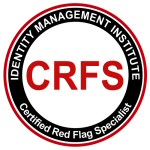Secure Your Mailbox

Your mailbox is like your voicemail system, but instead of allowing storage of voice messages, it allows for temporary storage of paper messages. Most paper based information flows through the mail box to reach you. Have you ever wondered why we secure our voicemail systems at home and use secret codes at work or on our cell phones to protect our voice messages but never really care about the paper messages placed in our home mailbox or work inbox, without any security, and sometimes for a very long period of time? Do you think that voice messages present a greater risk of identity theft than the paper messages? Really? Think again. We all receive a number of mails in the mail box each and every day. Sometimes, these mails include important information about your identity. At a minimum, most mails include your name and address on the outside and may provide even more information inside. Let’s list some of the important documents we might get that include sensitive information about us: bank statements which provide name, address, bank name, account number and balances; annual Social Security Administration statements; periodic employer statements like pay stubs, W2s, and pension plan information; brokerage firm 401K statements, credit card statements and much more. I think you get the idea. Most sophisticated identity theft cases, and depending on the intended purpose of the stolen identity, require advanced planning and such planning will require the gathering and accumulation of all necessary information, obtained from various sources. Sophisticated and organized identity theft cases are planned and executed like a puzzle game, piece by piece. In most cases and likelihood, all required information may not be available from one single source and therefore thieves have to plan for and gather the information piece by piece, from anywhere they can put their hands on where the information is available. Your mailbox, which by the way is unlocked for most homeowners, is a great source of information for thieves. Most apartments include mailboxes that can be locked but most houses have their mailboxes unlocked sitting on the street next to passing cars and pedestrians. And, how about your company? Is your company mail secure at all times from the time of delivery to the time it reaches the intended recipient? When I say reaching the intended recipient, I mean delivered and not placed in the recipient’s unsecured mailboxes. You need to know how sensitive paper information gets to you or your employees, either at home or at work, and assess whether they are secure and private. Make sure you treat your paper messages like your voice messages. You should be at a minimum as concerned about the security and privacy of your mail messages as you are with your voice messages. I would even go one step further and say, you should be more concerned about your paper mails than your voice mails.
Now that you understand the identity theft risks of paper mails, know the timing of mail delivery by the post office or any other delivery service, and collect the mails as soon as they are delivered. If possible, also place locks to secure the mailboxes.








